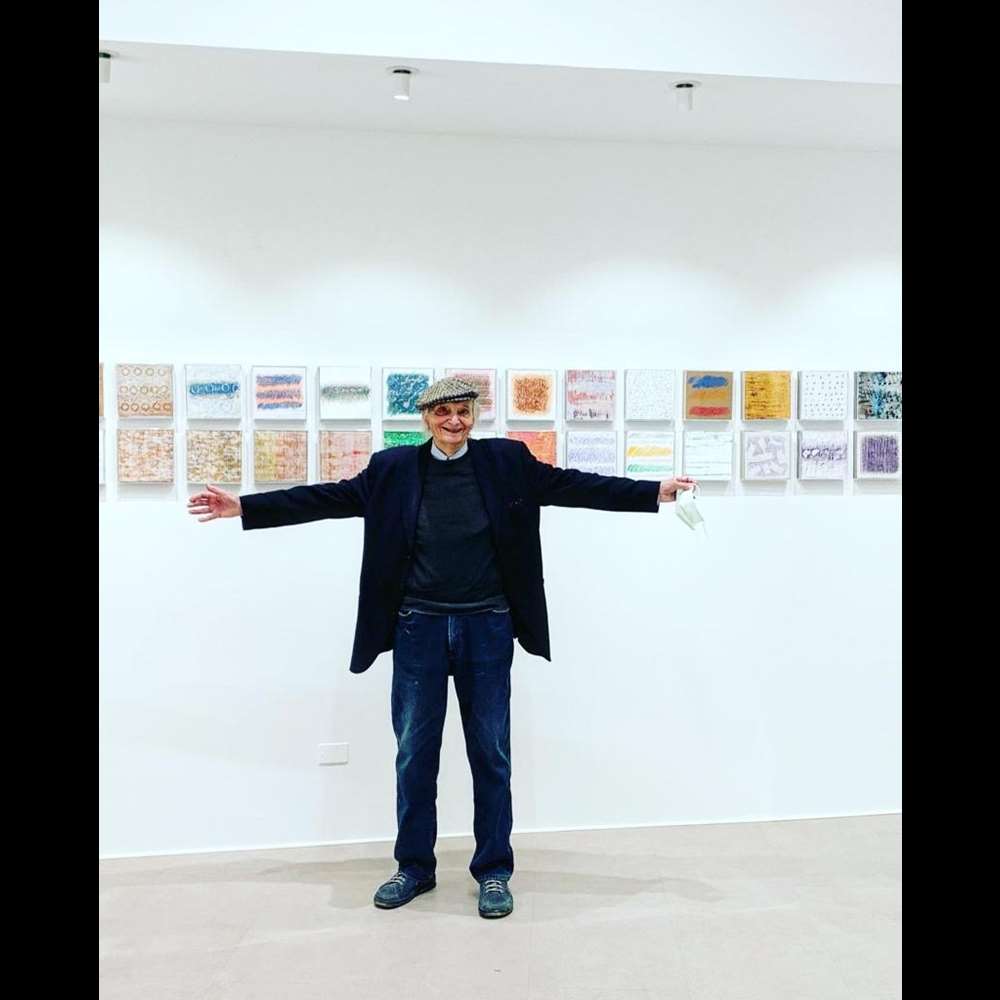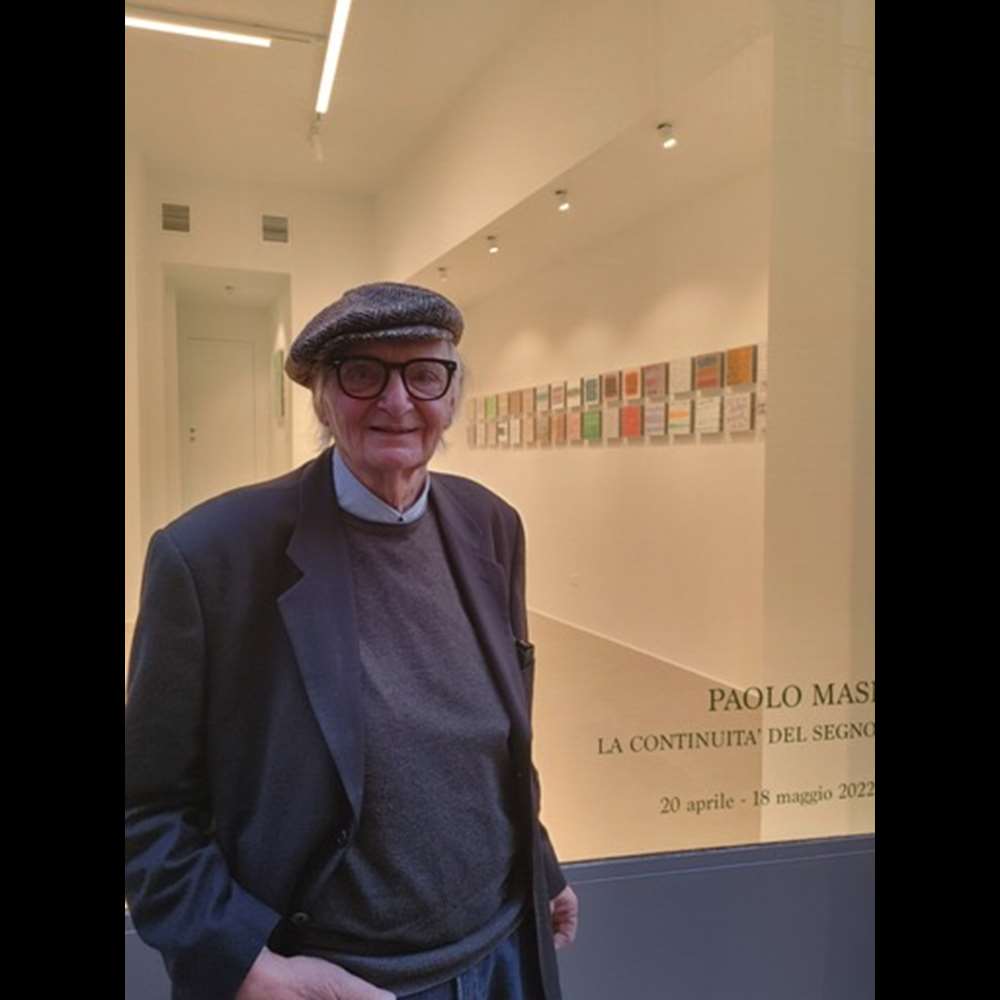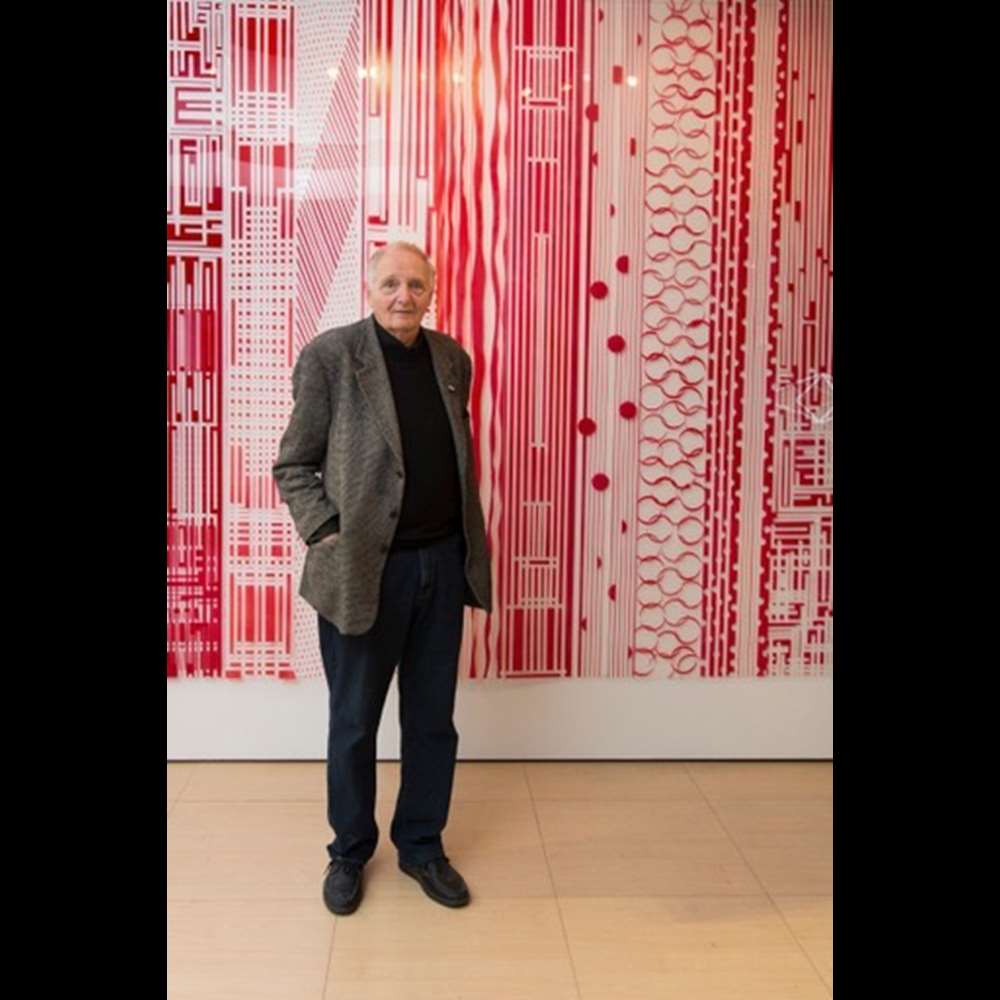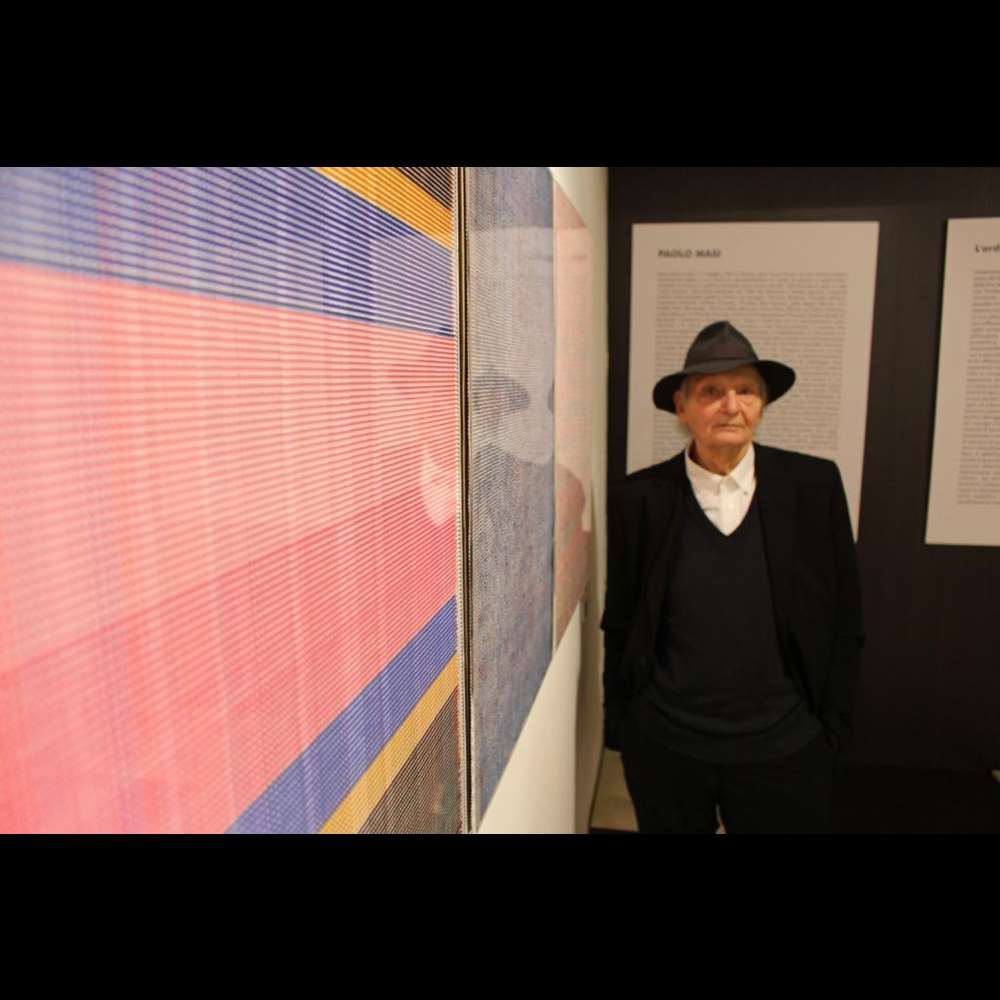-
Interview
1. What are the foundations of your research (Art Identity)?
In the late 1950s and early 1960s, informal research was essential. Structuralism, on the other hand, began in the 1960s, where the rules and parameters to be respected were very strict (if you drew a line, it had to be straight!). Then this rigidity was lost. One of the fundamental elements was the television which gave a completely different image from what was the normal press. Hp made his own works watching television through abstraction. All in all, this too is no longer concretism, it's a completely different quest. During the 70s and 80s the study of visual perception and the study of color were fundamental. Then this expansion began, this possibility of having everything available: figurative, non-figurative, abstract, non-abstract, photography. For example, in New York I took 475 polaroids focusing on the simplest urban elements (manholes, walls, floors…). In the 1990s and early 2000s, the Containers of Forma colore, the Serialità were born; I continue to produce the Cartoons and create the plexiglas series, Trasparenze, painted with the spray paint technique. I focus on the definition of space, through "kinetic-chromatic solicitations" of lights and shadows. Most of my work has been “on the road”, around the world…the adventures have been countless!
2. Who are the artists who have guided you in your research?
For example, here in Florence, certainly Riccardo Guarneri, Maurizio Nannucci, Lanfranco Baldi…
The line was roughly the same, but the important thing was to have this eye towards the outside, towards the international. That's where a crazy amount of relationships and various adventures open up. The provincial vision disappears.
3. Define yourself as a human being using three adjectives
Pleasant, helpful and friendly.
4. According to your vision, where is contemporary art going and where would you like it to go?
In contemporary art there is now a great deal of freedom. Many techniques are used, for example photography, cinema, performance and the computer. There are very young artists today who already start from the economy and can finance themselves to produce and exhibit their works. Instead, we started from ideology, from the journey, from the encounter. Today one of the artist's fundamental problems is: "Who are you addressing?", "Who are you going to work with?"...
Today the market dominates, of which I am a part, but which unfortunately on the one hand is a huge limitation for artists.
TWO WORDS ABOUT HIS WORKS
Paolo Masi, since the 1950s has participated in that creative and experimental fervor that characterizes the Florentine artistic environment, eager to free himself from all the canons of formalism and from any type of academism. Masi will pass from the initial experiences of informal painting and concrete abstractionism to an articulated, complex and diversified activity on a technical-linguistic level.
In the 1960s, programmatic and theoretical activity was carried out for Masi with participation in groups. We recall, for example, his participation with Lanfranco Baldi, Auro Lecci, Maurizio Nannucci, in the aesthetic research group Centro F / Uno (1967-70), which goes beyond the ambit of local contingencies, seeking references in wider contexts.
Later he approaches the contextual analytic-reductive experiences, breaking down and rearranging aluminum rods, mirrors, wires or small sticks of colored Plexiglas on the floor and against the walls, which also extend the rhythm of the "color-space" to the third dimension. He works with the Schema Gallery and the Christian Stein Gallery.
The next phase coincides with the return to two-dimensionality through the project External surveys - internal confirmations (1974-76), an elaboration that Paolo Masi develops outside his studio with the work begun in 1974 in New York of the Polaroids of manhole covers, walls and floors and, at the same time, inside the studio with the Tessiture (rough stitched canvas) and the Cartons for packaging, where he uses transparent and opaque adhesives for the first time, bringing out the internal structure of the material. He works with major galleries, to name one, La Polena.
Since 1974 Masi has been the co-founder together with Maurizio Nannucci and Mario Mariotti of a collective that manages the non-profit space of Zona in Florence, a space that aims to disseminate national and international artistic experiences. This experience will then find its continuation starting from 2000 in the Base collective.
His intense activity is confirmed and recognized both in Italy and abroad. We recall, among others, the participation in the Venice Biennale (1978); at the XI Quadriennale in Rome (1986).
The works of his most recent production are the Color Shaped Containers, the Serialities and once again the Cartoons. These works were presented several times at the Centro d'Arte Spaziotempo in Florence from 1993 to 2002.
The recent plexiglass series, Trasparenze, begun in 2000, painted with the spray paint technique, seals the incessant experimental evolution of Masi's work. The installation Untitled (Transparency) from 2003, made up of dozens of slender plates of painted Plexiglas, has become part of the permanent collection of the Pecci Museum in Prato and was recently presented at the Museum of Contemporary Art in Shanghai.
Historical works by the artist can be found in the collections of the Mart in Rovereto, the Galleria d'Arte Moderna of Palazzo Pitti in Florence and the Galleria d'Arte Moderna in Turin.
Two “Compositions” from the Milanese exhibition “Paolo Masi, Cartoni” held at Glenda Cinquegrana Art Consulting were recently acquired by the prestigious institutions Museum Ritter and the Brodbeck Foundation in Catania.




